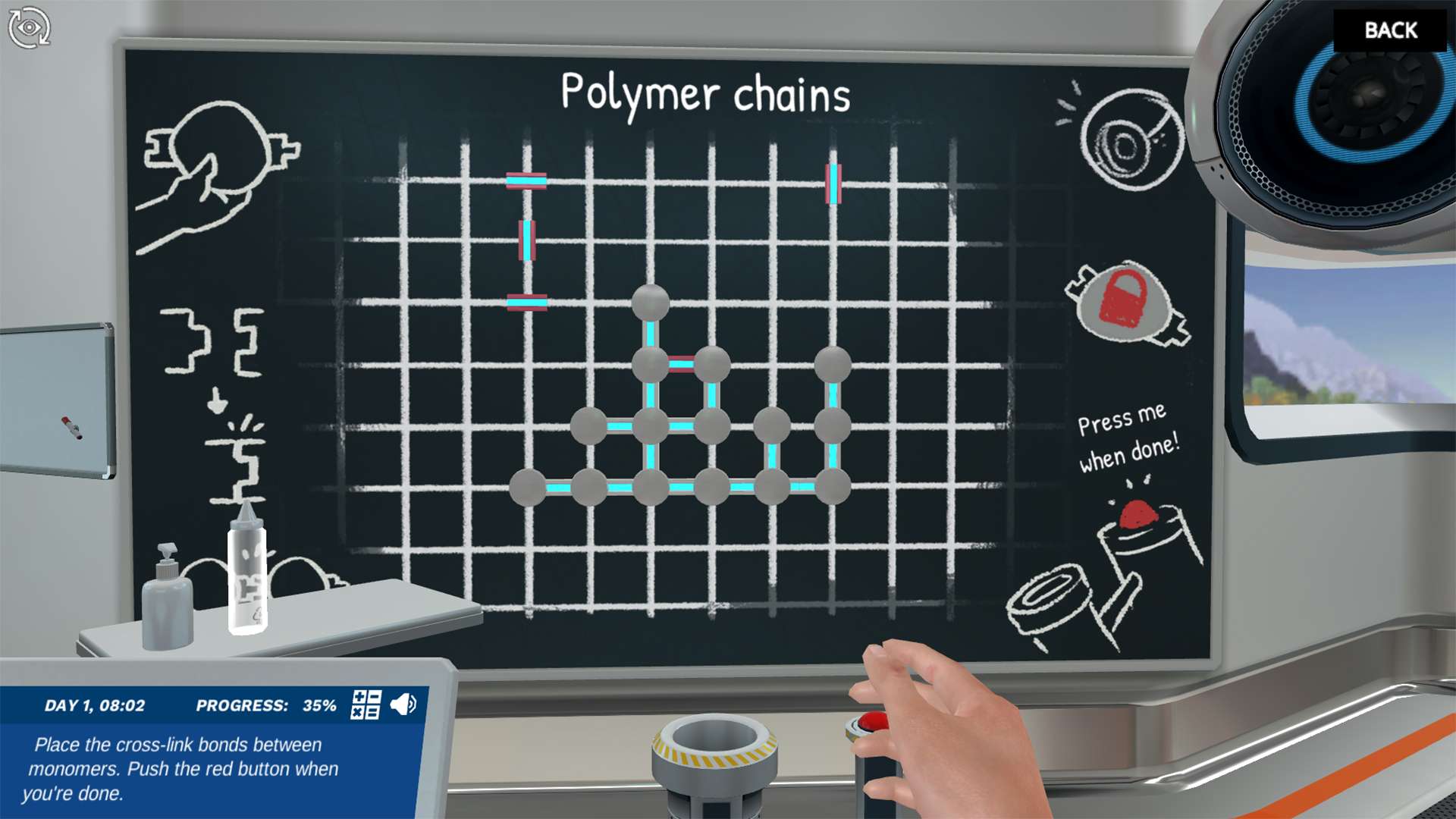Heading 1
Heading 2
Heading 3
Heading 4
Heading 5
Heading 6
Lorem ipsum dolor sit amet, consectetur adipiscing elit, sed do eiusmod tempor incididunt ut labore et dolore magna aliqua. Ut enim ad minim veniam, quis nostrud exercitation ullamco laboris nisi ut aliquip ex ea commodo consequat. Duis aute irure dolor in reprehenderit in voluptate velit esse cillum dolore eu fugiat nulla pariatur.
Block quote
Ordered list
- Item 1
- Item 2
- Item 3
Unordered list
- Item A
- Item B
- Item C
Bold text
Emphasis
Superscript
Subscript
About This Simulation
Learn how monomers assemble to form synthetic polymers with different chemical and physical structures. Use the property of synthetic polymers to connect them with everyday applications and discover how they impact our environment.
Learning Objectives
- Describe how synthetic polymers form and how that leads to different structures.
- Predict the properties of a synthetic polymer from its structure and therefore its application.
- Link the properties of polymers (natural vs. synthetic) with their environmental impact.
About This Simulation
Lab Techniques
Related Standards
- US College Year 2
- US College Year 3
Learn More About This Simulation
Did you know that synthetic polymers are essential for our everyday lives? In this simulation, you will learn about a wide range of synthetic polymer applications, from plastic sandwich bags and furniture to textiles and lightweight armor. You’ll link the chemical and physical structures of synthetic polymers to their properties and understand why those properties are ideal for some applications while bad for others.
Build synthetic polymers from monomers
Visualize how synthetic polymers form by assembling monomers into chains and branches. Get it right, and you will get a real-life object as a prize! Add cross-links to your polymer and realize how these links restrict the relative movement between chains. As a result, these cross-links affect properties like thermoplasticity, rigidity, and even the ability to withstand incoming bullets!
Use the properties of synthetic polymers to link them to applications
Dr. One is challenging you to a matching game that tests your memory! Here, you will need to link polymer structures to their respective applications. But don’t you worry, your knowledge of synthetic polymer properties is an ace up your sleeve!
Fast-forward time to investigate the longevity of polymers
Have you ever wondered if synthetic polymer bags are the best type of wrapping for food? With the power of a virtual lab, you will test the longevity of a synthetic polymer bag by putting it in a time machine. How do you think the synthetic polymer’s longevity compares to a piece of food? As a bonus, you’ll learn that food consists of natural polymers which decompose in weeks.
For Science Programs Providing a Learning Advantage
Boost STEM Pass Rates
Boost Learning with Fun
75% of students show high engagement and improved grades with Labster
Discover Simulations That Match Your Syllabus
Easily bolster your learning objectives with relevant, interactive content
Place Students in the Shoes of Real Scientists
Practice a lab procedure or visualize theory through narrative-driven scenarios


FAQs
Find answers to frequently asked questions.
Heading 1
Heading 2
Heading 3
Heading 4
Heading 5
Heading 6
Lorem ipsum dolor sit amet, consectetur adipiscing elit, sed do eiusmod tempor incididunt ut labore et dolore magna aliqua. Ut enim ad minim veniam, quis nostrud exercitation ullamco laboris nisi ut aliquip ex ea commodo consequat. Duis aute irure dolor in reprehenderit in voluptate velit esse cillum dolore eu fugiat nulla pariatur.
Block quote
Ordered list
- Item 1
- Item 2
- Item 3
Unordered list
- Item A
- Item B
- Item C
Bold text
Emphasis
Superscript
Subscript
A Labster virtual lab is an interactive, multimedia assignment that students access right from their computers. Many Labster virtual labs prepare students for success in college by introducing foundational knowledge using multimedia visualizations that make it easier to understand complex concepts. Other Labster virtual labs prepare learners for careers in STEM labs by giving them realistic practice on lab techniques and procedures.
Labster’s virtual lab simulations are created by scientists and designed to maximize engagement and interactivity. Unlike watching a video or reading a textbook, Labster virtual labs are interactive. To make progress, students must think critically and solve a real-world problem. We believe that learning by doing makes STEM stick.
Yes, Labster is compatible with all major LMS (Learning Management Systems) including Blackboard, Canvas, D2L, Moodle, and many others. Students can access Labster like any other assignment. If your institution does not choose an LMS integration, students will log into Labster’s Course Manager once they have an account created. Your institution will decide which is the best access method.
Labster is available for purchase by instructors, faculty, and administrators at education institutions. Purchasing our starter package, Labster Explorer, can be done using a credit card if you are located in the USA, Canada, or Mexico. If you are outside of North America or are choosing a higher plan, please speak with a Labster sales representative. Compare plans.
Labster supports a wide range of STEM courses at the high school, college, and university level across fields in biology, chemistry, physics, and health sciences. You can identify topics for your courses by searching our Content Catalog.















